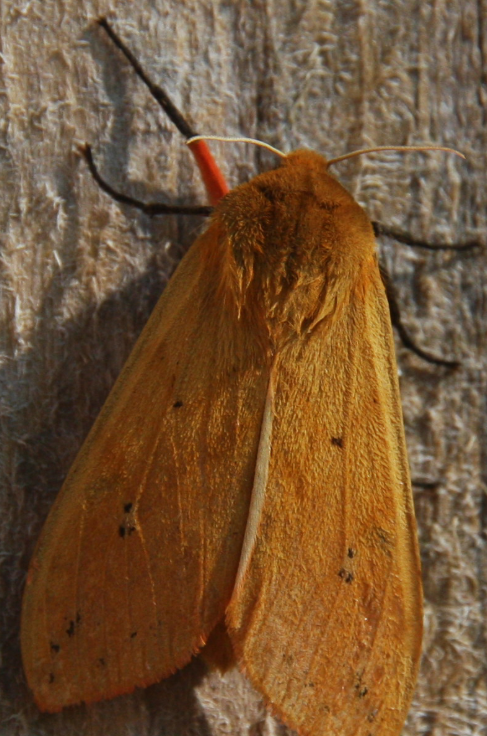Moths and butterflies belong to the same insect family. Moths aren’t just nocturnal, less-brightly colored cousins of butterflies. First of all, they’re not all nocturnal; hummingbird moths and hawk moths are out during the day. Second of all, some moths are vividly colored, like the cinnabar moth, known for red markings on its forewings and scarlet hindwings. The garden tiger has orange hindwings with black spots. The Madagascan moon moth, also known as the comet moth, is yellow, with an 8-inch wingspan and a 6-inch tail. Other evocatively-named moths include the scarlet tiger, clouded buff, early Thorn, blood-vein, and the black witch. The white witch moth is even bigger than the comet moth, with an 11-inch wingspan. It has a zigzag pattern to make it hard to see, but the reason you’ve never seen one is more likely that it’s native to Mexico and South America. Plus it only lives a week or two.
So how do you tell a moth from a butterfly? The easiest way is to observe them at rest. A butterfly’s wings will be closed while a moth’s will be open. Moths also have short feathery antennae; butterflies have long thin antennae (skippers are butterflies with hooked antennae). Moths also make a silky cocoon, while butterflies produce a shiny chrysalis.
There are many more species of moths than there are butterflies, nine times as many, in fact, maybe as many as 500,000. Moths are important pollinators as well as prey; their caterpillars also provide a lot of food for birds, bats, and other critters.
Maryland doesn’t have a state moth though many moths call Maryland home. Here’s a link to a page that shows photos of over 400 Maryland moths - https://www.insectidentification.org/insects-by-type-and-region.asp?thisState=maryland&thisType=Butterfly%20or%20Moth
You probably recognize the wooly bear caterpillar, an unreliable predictor of winter weather. Do you also recognize the moth it becomes, the Isabella tiger moth?
